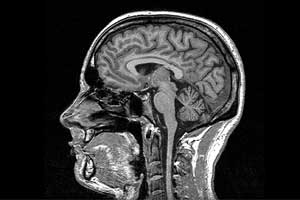- Home
- Editorial
- News
- Practice Guidelines
- Anesthesiology Guidelines
- Cancer Guidelines
- Cardiac Sciences Guidelines
- Critical Care Guidelines
- Dentistry Guidelines
- Dermatology Guidelines
- Diabetes and Endo Guidelines
- Diagnostics Guidelines
- ENT Guidelines
- Featured Practice Guidelines
- Gastroenterology Guidelines
- Geriatrics Guidelines
- Medicine Guidelines
- Nephrology Guidelines
- Neurosciences Guidelines
- Obs and Gynae Guidelines
- Ophthalmology Guidelines
- Orthopaedics Guidelines
- Paediatrics Guidelines
- Psychiatry Guidelines
- Pulmonology Guidelines
- Radiology Guidelines
- Surgery Guidelines
- Urology Guidelines
MRI of Idiopathic Intracranial hypertension: Before and after treatment

Turkey: Several morphometric Magnetic resonance imaging characteristics are reversible in patients with idiopathic intracranial hypertension (IIH), a recent study published in the Journal of Neuro-Ophthalmology. The researchers found the subarachnoid spaces to be filled with cerebrospinal fluid that reduced the ONST (optic nerve sheath thickness) and height of the pituitary gland that is not fully randomized after the treatment.
Idiopathic intracranial hypertension (IIH) — characterized by increased intracranial pressure (ICP). It can lead to disabling headaches and papilloedema and has a potential for severe visual loss permanent in up to 25%. Its treatment primarily focuses on the reduction of ICP to reduce headaches and preserve vision.
Batur Caglayan, Gazi University Faculty of Medicine, Besevler, Ankara, Turkey, and colleagues aimed to identify the reversibility of MRI findings indicative of increased intracranial hypertension in IIH patients after treatment.
The study included data from 10 patients with IIH and 10 controls. Brain MRI findings in IIH patients were recorded twice once when the patients had papilledema and then after the treatment. MRI findings were graded by neuroradiologists in both the groups based on an imaging grading scale.
Key findings of the study include:
- After the resolution of papilledema, all patients showed improvement in 2 or more of the MRI characteristics of IIH.
- This was especially the case for the height of the midsagittal pituitary gland and optic nerve sheath thickness (ONST), which were significantly different in all pairwise group comparisons.
- Sellar configuration, globe configuration, and horizontal orbital optic nerve tortuosity were different between the IIH pre-treatment group and controls, but not between controls and the IIH post-treatment group.
- No differences were found in optic nerve head hyperintensity or optic nerve thickness among the 3 groups.
"Although we observed a reduction in enlarged subarachnoid spaces filled with cerebrospinal fluid, there was no complete normalization of the optic nerve sheath thickness and the height of the pituitary gland after treatment," concluded the authors.
The study, "Magnetic Resonance Imaging of Idiopathic Intracranial Hypertension - Before and After Treatment," is published in the Journal of Neuro-Ophthalmology.
DOI: 10.1097/WNO.0000000000000792
Journal Information: Journal of Neuro-Ophthalmology

Disclaimer: This site is primarily intended for healthcare professionals. Any content/information on this website does not replace the advice of medical and/or health professionals and should not be construed as medical/diagnostic advice/endorsement or prescription. Use of this site is subject to our terms of use, privacy policy, advertisement policy. © 2020 Minerva Medical Treatment Pvt Ltd